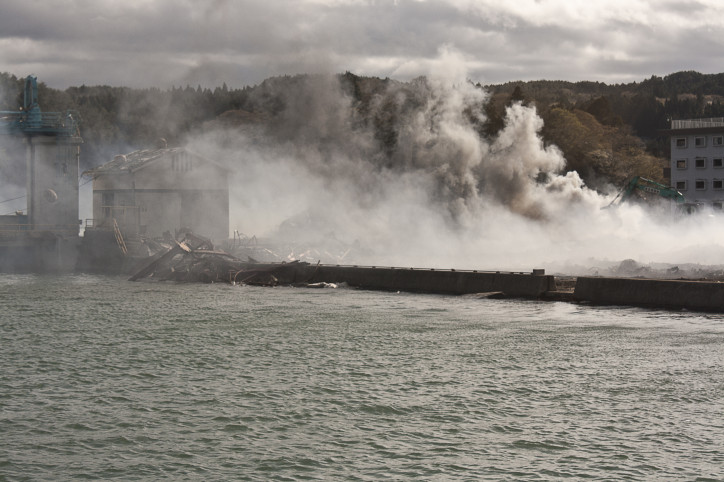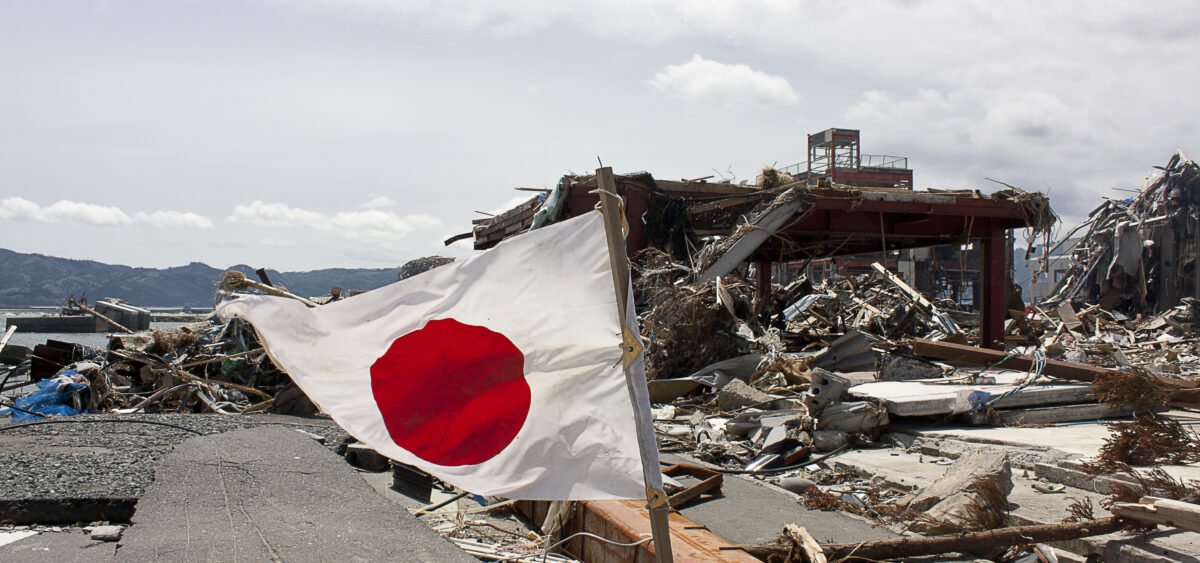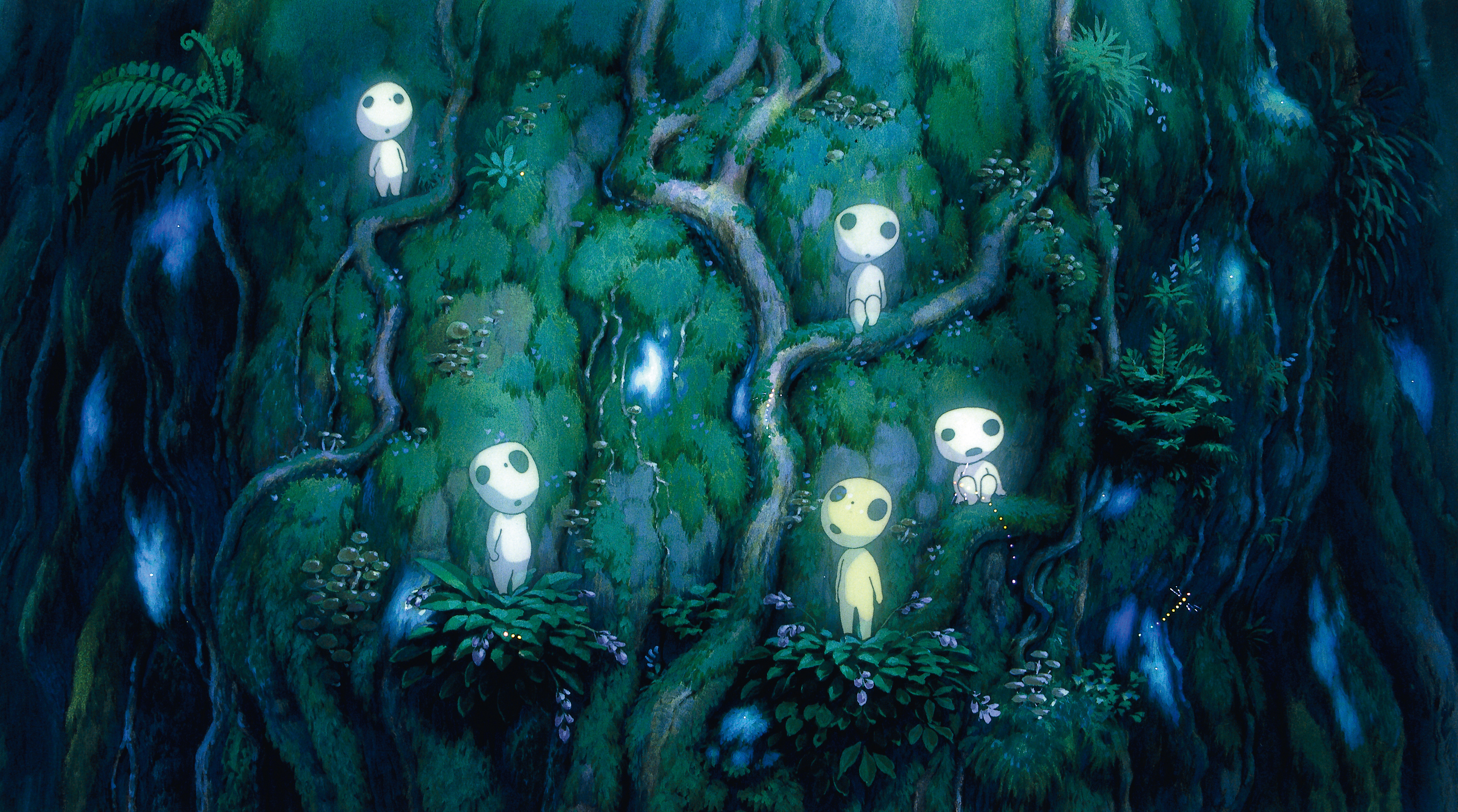
On 11th March 2011 at 2.45pm, Kenta was cleaning the rust from some metal moulds. Yasuo Takamatsu was leaving the hospital with his mother-in-law. The monk Kaneta was sitting in his temple in the city of Kurihara. And Mr. Teiichi was doing some shopping at an office supplies store.
The ground shook a minute later. As a result of the earthquake, Honshu, the largest island in Japan, shifted by 2.4 metres in the direction of America. The Earth’s axis shifted as well, by 10 centimetres, which accelerated its rotation. The day became shorter by 1.8 microseconds.
The ground shook for six minutes.
From his father’s workshop, Kenta managed to run 300 metres to his house on top of the hill, grab his grandmother and run outside with her. A moment later, the wooden altar with Shinto gods crashed to the floor, in the very spot they had just escaped from.
Yakuo Takamatsu and his mother-in-law ran out to open ground.
The monk Kaneta went to the upper floor of the temple, where all the books fell out of the shelves. He picked up the volume that lay on the very top of the pile. It was The Limits to Growth published by the Club of Rome.
And Mr. Teiichi ran through the cardboard boxes and bubble wrap into the street. He saw cracks in the street which were being filled by water.

Tōhoku, 2011 r., zdjęcie: Daniel Pierce/Flickr (CC BY 2.0)
I don’t remember how and when I found out about the earthquake in Japan. It happened at 6.46am CET, so I was surely asleep. But I do remember later pictures of the swollen sea that poured over the walls and ripped houses from their foundations. I recall seeing the cars trying to escape from the giant wave. I was learning some new names. Tõhoku – the northern part of the island of Honshu. Miyagi, Iwate, Fukushima – the three hardest hit prefectures. And then I remembered the words: core, reactor, iodine. I remember how tense I was as I waited to find out whether they were able to contain the blasts at the Fukushima Daiichi nuclear plant.
And how terrified I was when I saw the white smoke cloud hovering above reactor no. 1.
I thought that the picture of the Japanese woman, sitting among overturned cars, broken planks and gutted furniture said it all. Mountain of debris covered in sludge blocking the horizon. The woman took off her galoshes. Her bare feet were touching the wet grass. She pulled her bare legs up to her chin. She was crying.
I thought that nothing more could be said.
It wasn’t until 2014 that I understood things were different. I read in The Japan Times that of the 310,000 people evacuated in 2011, nearly 179,000 were still living in temporary complexes. This was accompanied by a photo: rows of identical sheet metal barracks with identical narrow asphalt streets running between them. I read about older people who couldn’t find their way home for hours. And that they weren’t able to recognize their house, even when they were standing in front of it. I read about thin corrugated metal walls that you can hear your neighbour through. And that would freeze in the winter and heat up in the summer. People would joke that you could fry eggs on the roof.
I needed a while to understand all that. In 2014, three years after the tsunami, 179,000 Japanese people, citizens of one of the wealthiest and most technologically advanced countries in the world, were living in containers. Which were, incidentally, certified until 2013.
The temporary housing was expired.
Also in 2014, the government announced a success. The process of





